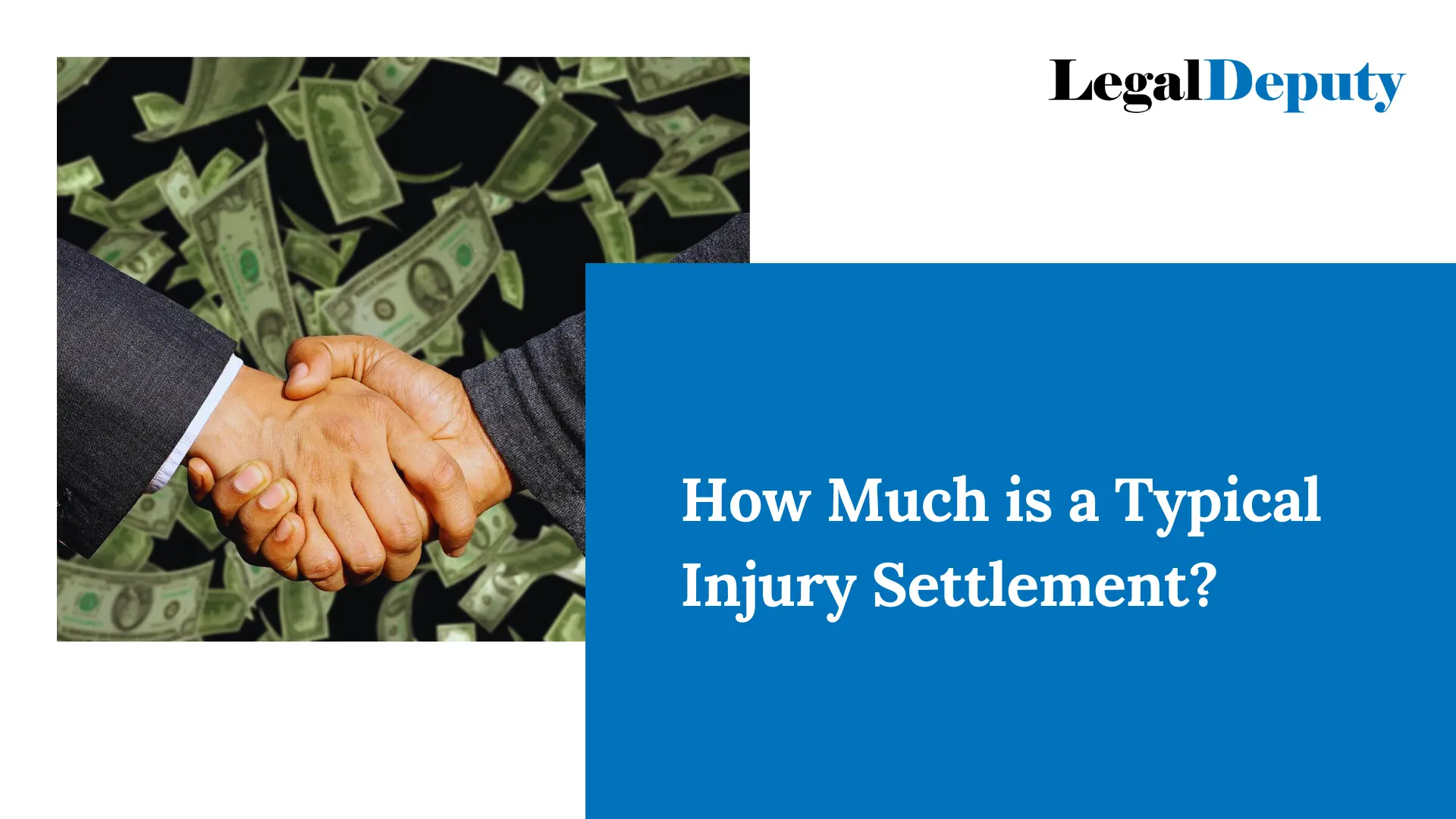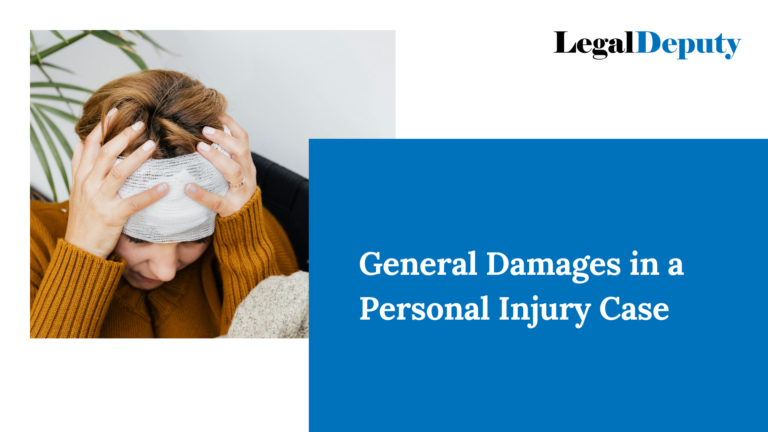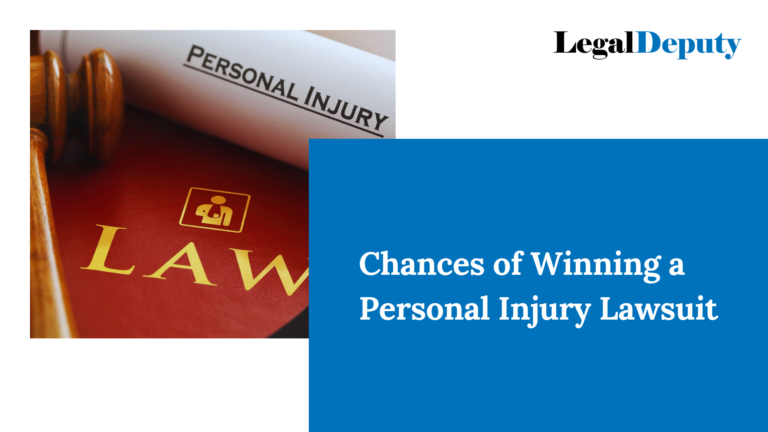How Much is a Typical Injury Settlement? The Ultimate Breakdown
Navigating the aftermath of a personal injury can be overwhelming, especially when it comes to understanding the potential financial compensation available through settlements. Whether you’ve been involved in a car accident, slipped and fallen, or sustained an injury at work, knowing what to expect in terms of a settlement is crucial. This blog aims to demystify personal injury settlements by exploring typical amounts across various case types and highlighting the factors that influence these payouts.
What is a Personal Injury Settlement?
A personal injury settlement is a financial agreement between the injured party (plaintiff) and the party responsible for the injury (defendant), typically facilitated by insurance companies. This settlement is reached outside of court and serves as compensation for the damages suffered by the plaintiff. Unlike a trial verdict, which is determined by a judge or jury, a settlement allows both parties to avoid the uncertainty, time, and expense of a courtroom battle.
Most personal injury cases, including those involving car accidents, slip and fall incidents, and workplace injuries, end in settlements. This is because settlements provide a more predictable outcome and allow both parties to move forward without the unpredictability of a trial.
Factors Affecting Injury Settlement Amounts

Understanding what influences a personal injury settlement is crucial for anyone involved in such a case. The final amount you might receive isn’t arbitrary; it’s the result of careful consideration of several key factors. Below, we delve deeper into each of these factors to provide a clearer picture of how settlements are determined.
1. Severity of the Injury
The severity of the injury is perhaps the most significant determinant of your settlement amount. This factor is assessed by evaluating both the physical and emotional impact of the injury.
- Minor Injuries: If the injury is relatively minor, such as a simple sprain, minor cuts, or bruises, the settlement amount will typically be lower. These cases often involve short-term medical treatment, and the recovery period is usually brief. Settlements for minor injuries generally cover immediate medical expenses, possibly a small amount for pain and suffering, and any short-term lost wages. However, these settlements rarely exceed a few thousand dollars.
- Moderate to Severe Injuries: As the severity of the injury increases, so does the complexity of the settlement. For example, injuries like broken bones, significant lacerations, or injuries requiring surgery and extended physical therapy typically lead to higher settlements. These cases involve not just immediate medical costs, but also ongoing treatment, possible future medical issues, and a more substantial impact on the victim’s quality of life.
- Catastrophic Injuries: The highest settlements are reserved for catastrophic injuries, such as traumatic brain injuries, spinal cord injuries leading to paralysis, or injuries resulting in permanent disability or disfigurement. These cases often require lifelong medical care, and the victim’s ability to work or even perform daily activities can be permanently affected. As a result, settlements in these cases are often substantial, running into hundreds of thousands or even millions of dollars.
In essence, the more severe and long-lasting the injury, the higher the settlement is likely to be. This is because the compensation must adequately cover both the current and future impact of the injury on the victim’s life.
2. Liability
Liability refers to who is legally responsible for the injury. The clearer the liability, the stronger your case for a higher settlement.
- Clear Liability: If the other party’s fault is obvious and undisputed, such as in a case where a driver rear-ends another car at a red light, the settlement process is generally more straightforward. Insurance companies are more likely to offer a fair settlement quickly in these situations because they recognize that a trial would likely end in a verdict against their client.
- Shared or Disputed Liability: However, if liability is shared between the parties (for example, both drivers in an accident are partially at fault) or if the responsible party disputes their liability, the settlement amount may be lower. In such cases, the settlement may be reduced by the percentage of fault attributed to the injured party. For instance, if you are found to be 30% at fault in an accident, your settlement might be reduced by 30%.
- Complex Cases: In more complex cases, such as those involving multiple parties (e.g., a multi-car pileup or a construction site accident), determining liability can be challenging. These cases often require extensive investigation, expert testimony, and potentially even litigation, all of which can affect the settlement amount and timing.
The clearer and more straightforward the liability, the easier it is to negotiate a favorable settlement. Disputed or shared liability often complicates negotiations and can lead to lower compensation.
Want a Free Consultation?
3. Medical Expenses
Medical expenses form the backbone of most personal injury settlements. They represent the most tangible and quantifiable damages.
- Immediate Medical Costs: This includes the cost of emergency care, hospital stays, surgeries, doctor visits, medication, and any other treatments immediately following the injury. These costs are usually straightforward to calculate, as they are based on actual bills and receipts.
- Ongoing Medical Treatment: In cases of severe injuries, ongoing medical treatment may be necessary. This can include physical therapy, follow-up surgeries, specialist visits, and long-term care. The settlement must account for these future medical expenses, which can be more challenging to estimate. Often, medical experts are consulted to provide an estimate of the future care needed and its associated costs.
- Future Medical Needs: For catastrophic injuries, the victim may require lifelong care. This could involve home modifications, nursing care, medical devices (such as wheelchairs or prosthetics), and regular medical check-ups. Estimating these future costs is crucial in ensuring the settlement is adequate.
- Health Insurance and Medical Liens: It’s also important to consider whether health insurance has covered some of the medical costs. In many cases, health insurance companies may place a lien on any settlement to recover the money they have paid out. This can affect the net amount the injured party receives.
Medical expenses are not just about covering bills—they’re a key indicator of the injury’s severity and the basis for many other components of the settlement, such as pain and suffering.
4. Lost Wages and Earning Capacity
If your injury has caused you to miss work or has affected your ability to earn income in the future, these losses will be a significant part of your settlement.
- Lost Wages: This is the income you’ve already lost due to the injury. It includes the time you’ve been unable to work, including time spent at medical appointments or recovering at home. Calculating lost wages is relatively straightforward if you have a regular salary. For hourly workers, it involves multiplying the number of hours missed by your hourly wage. If you’re self-employed, it might require a more detailed analysis of lost business opportunities or contracts.
- Loss of Earning Capacity: This refers to the reduction in your ability to earn income in the future due to the injury. For example, if a construction worker suffers a back injury that prevents them from lifting heavy objects, they may no longer be able to work in their previous capacity, even if they can perform less physically demanding jobs. Calculating loss of earning capacity often involves assessing the difference between what you could have earned in your previous role and what you can now earn, factoring in your age, skill set, and job market conditions.
- Permanent Disability: In cases where the injury leads to permanent disability, this component of the settlement becomes even more significant. The compensation must account for the lifelong impact on your ability to work and support yourself and your family.
Lost wages and earning capacity reflect the economic impact of the injury beyond immediate medical costs, ensuring that you are compensated for the broader financial consequences of your injury.
5. Pain and Suffering
Pain and suffering refer to the physical and emotional distress caused by the injury. Unlike medical expenses or lost wages, pain and suffering are non-economic damages, making them more subjective and harder to quantify.
- Physical Pain: This includes the actual physical pain resulting from the injury, such as chronic pain, discomfort from surgery, or the pain associated with rehabilitation. The severity and duration of the pain, along with the type of injury, are considered when determining compensation for physical pain.
- Emotional Distress: Emotional distress encompasses the psychological impact of the injury, such as anxiety, depression, fear, and loss of enjoyment of life. For example, a person who suffers a permanent disfigurement may experience ongoing emotional trauma and a diminished quality of life, which would be factored into the settlement.
- Impact on Daily Life: Courts and insurance companies also consider how the injury has affected your day-to-day life. If you can no longer participate in activities you once enjoyed, such as sports, hobbies, or social events, this loss of enjoyment can increase the pain and suffering component of your settlement.
- Calculating Pain and Suffering: There are various methods to calculate pain and suffering. One common approach is the “multiplier method,” where the total of your economic damages (medical bills, lost wages) is multiplied by a number, typically between 1.5 and 5, depending on the severity of the injury. Another approach is the “per diem” method, where a specific dollar amount is assigned for each day you experience pain and suffering from the injury.
Pain and suffering are essential elements of a personal injury settlement, addressing the non-economic impact of the injury on your life.
6. Insurance Policy Limits
The at-fault party’s insurance policy limits are a critical, often overlooked factor that can cap the amount of your settlement.
- Negotiating with Insurance Companies: Understanding the policy limits is crucial when negotiating with insurance companies. If your damages approach or exceed the policy limits, the insurance company might be more inclined to settle for the full amount to avoid the risk of a trial where they could be held responsible for an even higher payout.
- Policy Limits: Insurance companies are only obligated to pay up to the policy limits of the at-fault party’s insurance coverage. For example, if the at-fault driver in a car accident has a policy limit of $50,000, that is the maximum amount the insurance company will pay, regardless of the actual damages you’ve incurred.
- Underinsured Situations: In cases where your damages exceed the policy limits, you may need to look for additional sources of compensation. This could include filing a claim against your own underinsured motorist coverage if you have it, or pursuing the at-fault party’s personal assets, though this can be challenging and often yields limited results.
Typical Settlement Amounts for Different Types of Cases
While every case is unique, there are some general trends in settlement amounts for different types of personal injury cases.
1. Car Accident Settlements

Car accidents are among the most common personal injury cases. The average settlement for a car accident can range from $15,000 to $30,000 for less severe injuries, such as whiplash or minor fractures. For more serious injuries, like broken bones, spinal injuries, or head trauma, settlements can range from $50,000 to $100,000 or more.
Example: A case involving a rear-end collision that resulted in a herniated disc settled for $75,000. This amount included compensation for medical bills, lost wages, and pain and suffering.
2. Slip and Fall Settlements

Slip and fall accidents can lead to a wide range of injuries, from minor sprains to severe fractures or head injuries. Settlements in these cases typically range from $10,000 to $50,000. However, if the fall results in significant medical expenses or long-term disability, settlements can exceed $100,000.
Example: A case where a person slipped on a wet floor in a grocery store, resulting in a broken hip, settled for $90,000. This included coverage for surgery, rehabilitation, and loss of income.
3. Workplace Injury Settlements

Workplace injuries often fall under workers’ compensation, but in some cases, a personal injury claim may be filed. Settlements for workplace injuries vary widely, from $20,000 to $70,000 for more typical cases, to six figures for severe injuries, especially if negligence can be proven.
Example: A worker injured by faulty equipment received a settlement of $120,000, which covered medical expenses, ongoing therapy, and compensation for permanent disability.
Want a Free Consultation?
Common Misconceptions About Injury Settlements
All Cases End in Huge Payouts
A common misconception is that every personal injury case results in a large payout. In reality, the settlement amount is closely tied to the actual damages sustained. While some high-profile cases do result in substantial settlements, the majority are more modest, reflecting the actual financial and emotional impact of the injury.
Faster Settlements Are Better
Another myth is that settling quickly is always in your best interest. While a fast settlement can provide immediate financial relief, it may also result in a lower amount, especially if future medical needs or long-term impacts are not fully considered. It’s often better to wait until the full extent of your injuries and their impact is clear.
Insurance Companies Are on Your Side
Insurance companies often present themselves as being helpful and fair, but their primary goal is to minimize payouts. They may offer quick settlements that seem generous but are often lower than what you might be entitled to. Having legal representation can help ensure that you receive a fair settlement.
Steps to Take to Maximize Your Settlement
Document Everything
Detailed documentation is crucial. This includes medical records, bills, police reports, witness statements, and any other evidence that supports your claim. The more evidence you have, the stronger your position in settlement negotiations.
Seek Immediate Medical Attention
Even if you feel fine immediately after an accident, it’s important to seek medical attention. Some injuries may not be immediately apparent, and delaying treatment can not only harm your health but also weaken your claim.
Hire an Experienced Personal Injury Lawyer
An experienced lawyer can make a significant difference in the outcome of your case. They can help gather evidence, negotiate with insurance companies, and ensure that all aspects of your damages are considered in the settlement.
Conclusion
Understanding the potential settlement amount in a personal injury case can help you navigate the process with greater confidence. While the exact amount can vary based on several factors, being informed about what influences these settlements can help you set realistic expectations and make informed decisions. Remember, while this blog provides a general overview, it’s always best to consult with a legal professional for advice tailored to your specific situation.
Frequently Asked Questions
1. What is the average personal injury settlement amount?
- The average personal injury settlement can range from $3,000 to $75,000, depending on factors like the severity of the injury, liability, and medical expenses. Catastrophic cases can result in settlements exceeding $100,000.
2. How long does it take to receive a settlement?
- Settlement timelines vary widely. Some cases settle in a few months, while others can take a year or more, especially if the injury is severe or liability is disputed. Consulting with an attorney can help expedite the process.
3. Will I have to go to court to receive a settlement?
- Most personal injury cases settle out of court. Going to trial is usually a last resort if a fair settlement cannot be reached through negotiation.
4. How are pain and suffering calculated?
- Pain and suffering are typically calculated using a multiplier of your economic damages (medical bills, lost wages) or by assigning a daily value to your suffering. The method used depends on the specifics of your case.
5. Can I still receive a settlement if I was partially at fault?
- Yes, you can still receive a settlement if you were partially at fault, but your compensation may be reduced based on your percentage of fault. This is known as “comparative negligence.”
6. What should I do if the insurance company’s offer seems low?
- If the insurance company’s offer is lower than expected, it’s advisable to consult with a personal injury attorney. They can negotiate on your behalf and ensure you receive fair compensation for your injuries.
7. Are there caps on personal injury settlements?
- Some states have caps on non-economic damages (like pain and suffering) in personal injury cases, particularly in medical malpractice claims. However, economic damages, such as medical expenses and lost wages, are usually not capped.
8. What happens if my medical bills exceed the at-fault party’s insurance limits?
- If your medical bills exceed the at-fault party’s insurance limits, you may need to explore other compensation sources, such as underinsured motorist coverage or pursuing the at-fault party’s personal assets.
9. Do I need a lawyer to settle a personal injury claim?
- While you can settle a personal injury claim without a lawyer, having legal representation can significantly improve your chances of receiving a fair settlement, especially in complex or high-value cases.
10. How can I maximize my personal injury settlement?
- To maximize your settlement, document all medical treatments, follow through with recommended care, and consider consulting a personal injury attorney to negotiate on your behalf. Acting quickly and avoiding early lowball offers from insurance companies are also crucial.
Related Blogs:
7 Reasons Your Personal Injury Case May Go To Trial
Top 7 Examples of Negligence in Car Accidents
Disclaimer:
The information provided in this blog, “How Much is a Typical Injury Settlement?”, is intended for general informational purposes only and does not constitute legal advice. While we strive to provide accurate and up-to-date information, the content of this blog may not reflect the most current legal developments or interpretations.
Readers should not act or refrain from acting based on the information contained herein without seeking appropriate legal or other professional advice on the specific facts and circumstances at issue from a licensed attorney in the relevant jurisdiction. This blog is not intended to create, and receipt of it does not constitute, an attorney-client relationship between the reader and the author or the author’s affiliated organization.
All liability with respect to actions taken or not taken based on the contents of this blog is expressly disclaimed. The information is provided “as is”; no representations are made that the content is error-free.
For specific legal advice regarding your personal injury case or any other legal matters, please consult with a qualified legal professional.







